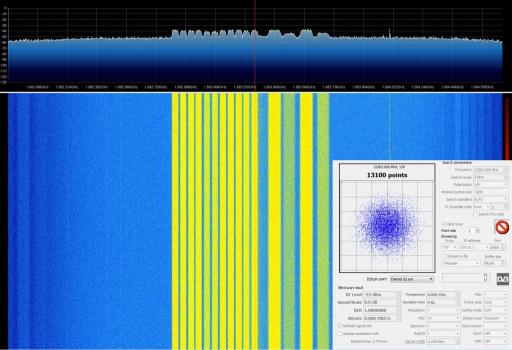Using the RTL-SDR as a Cheap TV Satellite Finder
Finding the correct direction to point a satellite for TV reception can be difficult without the right equipment. YouTube user MegaOscarVideos shows us in the video below how he uses an RTL-SDR to accurately aim his satellite for TV reception.
He uses a TV satellite dish with an LNB connected to a bias-T circuit as the receiver, which is then connected to the RTL-SDR. As the satellite is moved he looks for the direction at which the signal level in SDR# increases the most.
